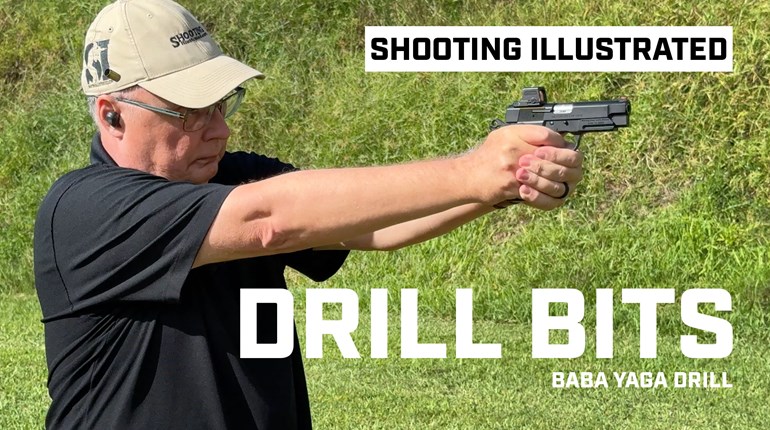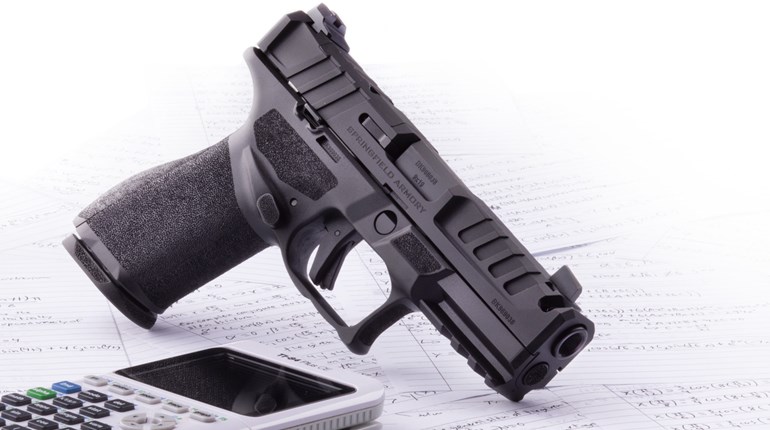
How can a shooter be flawless and flinch-less in dry practice, yet have a woeful performance in live fire? A short lesson in quantum mechanics from Nobel Prize-winning physicist Erwin Schrödinger may provide some insight. The practice drill, based on the “Schrödinger’s Cat” experiment, balances the body and the brain through a two-part exercise where anticipation and flinch are explored and eliminated.
In 1934, Schrödinger penned his most famous thought experiment: the Schrödinger’s Cat Paradox. A brutally oversimplified explanation of the experiment: In a room, there is an opaque box, and inside it is a cat. Due to circumstances beyond our control, we do not know if the cat is alive or dead. Because both options are equally possible, the box is in a state of what is known as “quantum superposition.” When the observer touches the lid to open it, the probability of the cat being alive or dead is 50/50. Only after the lid is off is the actual state of the cat known.
How does this translate to shooting? If not practiced correctly, dry fire can cultivate a no-consequence, or “dead-cat,” mindset. The brain allows the body to relax as there is no recoil or performance judgment on target. Live fire, “live-cat” mindset, comes with physicality, the auditory report and the stress of being graded downrange. Because the shooter knows that the gun is loaded, they fundamentally alter their performance at a subconscious level and discover they missed their mark. To correct this behavior, we need to train with a mindset of quantum superposition—the probability of the gun being both inert and live is equal—to ensure our technique is not altered based on what they predict to be chambered.
In this drill, the shooter learns to consistently function the gun such that at the trigger break (lifting the lid), there is either a dead cat (snap-cap) or a live cat (live round) in the box (chamber). Three possibilities can occur in range practice: the shooter knows there is a snap-cap in the chamber, they know a live round is in the chamber or they have a Schrödinger’s Cat Paradox—they don’t get to know until they take the shot. You’ll need a semi-automatic handgun, two magazines, 10 snap-caps, 50 rounds of ammo and two B-8 targets placed side-by-side at 10 yards.
Here’s the Drill:
Part 1—Dead Cats
Load one magazine with eight snap-caps and two live rounds loaded at random. Live rounds may not be the first, last or one atop the other in the mag. The drill is fired at the left target, one shot per presentation until the magazine is empty. Treat snap-caps as failure-to-fire malfunctions and perform a safe tap-rack to clear and cycle the next round. The goal is to place the two live shots within the black of the B-8 and to witness the sights hover without movement over the B-8 center for the eight snap-cap “shots.”
What is happening? The shooter acclimates to the expectation that the gun is predominantly inert and will not move the gun at the trigger break. While mentally relaxed, they become meticulous in their trigger press as they cannot predict when the live round will manifest. This heightened state of awareness increases tactile discrimination and sight focus. Any flinch is visible. This first magazine is an opportunity to study the shooter’s consistency or inconsistency with just enough stress. The two live rounds keep the shooter honest and engaged.
Part 2—Live Cats
Load one magazine with eight live rounds and two snap-caps loaded at random. Snap-caps may not be the first, last or consecutive in the mag. The drill is fired at the right target, one shot per presentation, until the magazine is emptied. The goal is to place all eight live shots within the black of the B-8 and to witness the sights hover without movement over the B-8 center for the two snap-cap “shots.”
What is happening? The shooter loads the gun with the knowledge that it is filled with predominantly live ammo and recoil is imminent. After shooting the Dead Cats phase, they should be dialed in to be aware of each shot’s nuance. If they can treat the gun the same with the knowledge that there is either a snap cap or live round, there should be no gun movement at the trigger break, no flinch and all hits on target.
Repeat four more times.
Editor’s note: No cats were harmed in the creation of this drill.




































